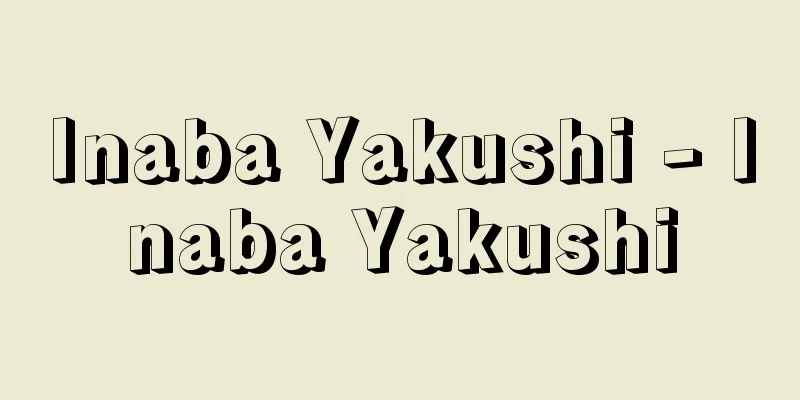Remember card - Remember card

|
...The notices symbolized the authority of the rulers and were themselves objects of reverence. The new Meiji government inherited the notice system, and in March 1868 (Meiji 1), it removed the old notices and issued permanent notices on morality, cliques, and Christianity, and temporary notices on foreign relations and desertion. These were the so-called "Five Notices." *Some of the terminology explanations that mention "Kakufuda" are listed below. Source | Heibonsha World Encyclopedia 2nd Edition | Information |
|
…高札は為政者の権威を象徴し,それ自体畏敬の対象であったのである。明治新政府も高札の制度を受け継ぎ,1868年(明治1)3月従来からの高札を取り除かせるとともに,永制たる定(さだめ)札として人倫札,徒党札,切支丹札を,暫時掲示すべき覚(おぼえ)札として外国交際札,脱国札を発した。いわゆる〈五榜(ごぼう)の掲示〉である。… ※「覚札」について言及している用語解説の一部を掲載しています。 出典|株式会社平凡社世界大百科事典 第2版について | 情報 |
>>: Oboe d'amore - Oboe d'amore
Recommend
Dioscorea bulbifera (English spelling)
…[Shinichi Suzuki]. … *Some of the terminology th...
Arare soba
...The name first appears in documents from the b...
Omiya Dance
A folk performing art handed down in the Hiruzen r...
Hooker, WJ
…It is made up of four departments: the herbarium...
Mandragora (English spelling)
A perennial plant of the Solanaceae family native ...
Cannibal sister - Cannibal sister
This Japanese folk tale is also known as "The...
Bernard Palissy
A French Renaissance potter from around 1510 to 15...
Saikai - Saie
〘Noun〙① A Buddhist ceremony in which sacred food i...
Girtin, Thomas
Born: February 18, 1775, London [Died] November 9,...
ars magna Raimundi (English spelling) arsmagnaRaimundi
... Lull's thought, which was influenced by K...
Letter of Order - Osei dasaresho
…Thus, it was drafted in a very short time and en...
Cololabis adocetus (English spelling)
…[Shinichi Suzuki]. … *Some of the terminology th...
Copal (English spelling)
A type of natural resin. Some are fossilized or se...
Familial progressive myoclonic epilepsy - kazokusei shinkosei myoclonic epilepsy
...The atonic seizures show generalized polyspike...
Transferable security - Jototanpo
A security where the ownership of the item used a...


![Osawa [Hot Spring] - Osawa](/upload/images/67cfc2038cc5b.webp)






